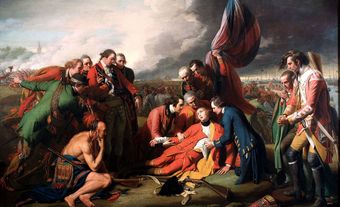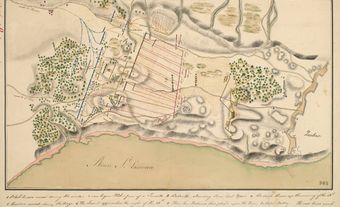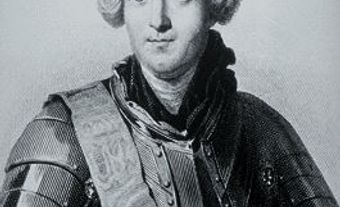The Battle of the Plains of Abraham and the capitulation of Quebec City in 1759 made the strategic situation of New France desperate. Despite a victory at the Battle of Sainte-Foy, the French forces found themselves isolated in Montreal by the British. The French commander, François-Gaston de Lévis, wanted to continue the fight. However, to avoid a pointless loss of life, the Governor of New France, Pierre-Rigaud de Vaudreuil, decided to surrender the city. With the capitulation of Montreal to the British forces on 8 September 1760, Great Britain completed its conquest of New France.

Military Operations
During the summer of 1760, three British armies converged on the island of Montreal from three directions: up the St. Lawrence River from Quebec City, down from Lake Ontario and along the Richelieu River. In August, the Seven Nations — the Indigenous allies of France — negotiated the Treaty of Oswegatchie with the British. As James Murray burned the farms of any who continued to fight, the Canadian militiamen began to return to their homes. The remnants of the French army, led by François-Gaston de Lévis following the death of Louis-Joseph de Montcalm retreated to Montreal.
Thus, in September 1760, the situation faced by the French forces in North America was dire. Nevertheless, François-Gaston de Lévis wanted to continue fighting to defend the honour of the French army.
Capitulation
On 6 September 1760, Governor Pierre-Rigaud de Vaudreuil called a council of war. In view of the situation, the officers recommended that he negotiate the conditions of surrender with General Jeffrey Amherst.
However, the terms imposed on Governor Vaudreuil by General Amherst were much more severe than those of the capitulation of Quebec City and called for the surrender of the colony of New France. The first three articles also refused to give the French army the usual honours of war. Faced with these humiliating demands, the Chevalier de Lévis proposed continuing the fight. His proposal was, however, rejected by the governor. Forced to surrender, François-Gaston de Lévis had the regimental flags burned on Île Sainte-Hélène to keep them from falling into the hands of the enemy.
On 8 September 1760, Pierre-Rigaud de Vaudreuil signed the capitulation of Montreal and New France.
Aftermath
Following the capitulation of Montreal, a British military regime was established to replace the French colonial administration while awaiting the signature of a final peace treaty (see Treaty of Paris 1763).
From 1760 to 1763, more than 4,000 colonists returned to France. Thanks to French requests during the negotiations, private ownership rights and civil law in accordance with the Coutume de Paris were guaranteed, as was the freedom to practise Catholicism. Article 40 guaranteed the Indigenous allies of the French the right to missionaries, as well as to their property. Historians will be eternally grateful to Pierre-Rigaud de Vaudreuil to have also requested that the records of the French administration be safeguarded.

 Share on Facebook
Share on Facebook Share on X
Share on X Share by Email
Share by Email Share on Google Classroom
Share on Google Classroom






